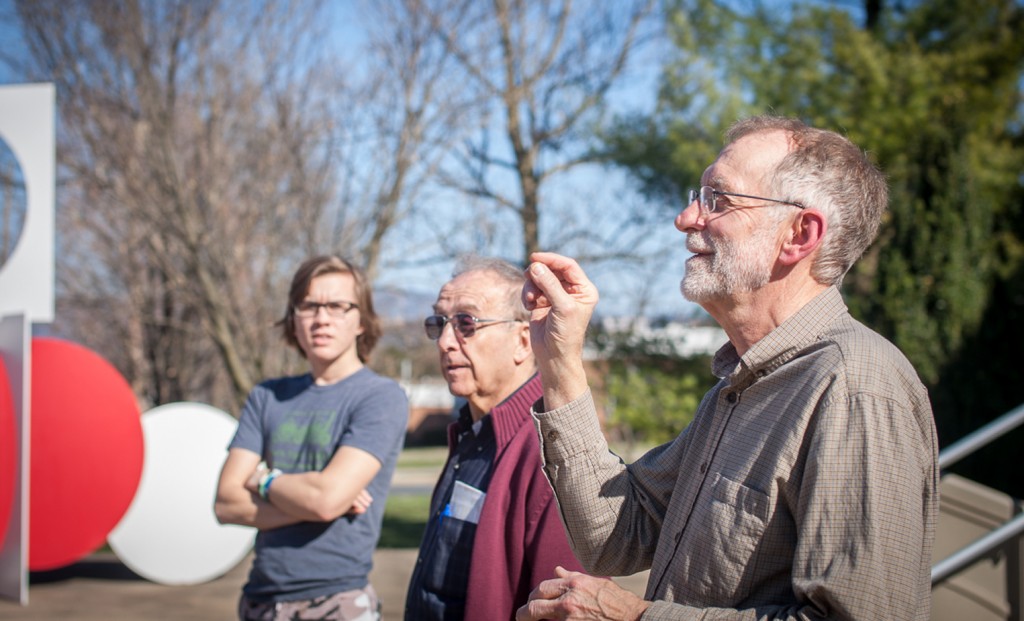Restorative justice expert Howard Zehr is the author of the following op-ed piece on the need to examine alternatives to constantly building more space in EMU’s home region to incarcerate more and more people.
Having worked with justice and correctional issues for almost 40 years, I am pleased that county officials are looking at alternatives to building a new jail facility, as reported by the Daily News-Record (June 6). I endorse the idea of considering the big picture in an effort to forestall the need for ever-more facilities.
I also welcome consideration being given to the needs of prisoners with mental health issues. Our jails and prisons have become holding places for such individuals. Without the treatment and consideration they need, their roles in the cycles of wrongdoing and incarceration will likely continue.
Additionally, however, the county should consider the structure of decision-making and the goals that guide these decisions. Questions worthy of serious consideration:
- Who makes decisions about charging and sentencing, and how can they become more accountable for the impact of these decisions on the system as a whole? What are their goals in doing so?
- Should the goal of our justice system be simply to punish? Or are there other, more positive goals, such as healing the harms experienced by victims and enabling as many offenders as possible to be productive, law-abiding citizens?
If these questions are not addressed, we can expect to see any new facilities fill up and overflow, presenting us with the same human, financial, and logistical issues we now face.
Try picturing our justice system as a lake connected to a small bucket by a pipe. The pipe is interrupted by several valves. Each valve sits within a windowless shanty.
The water in the lake represents behavior that is viewed as criminal. In each of the shanties are individuals turning valves – police, prosecutors, probation officials, judges – without a clear feedback system or direct accountability for their decisions. The bucket (the local jail) regularly fills up, overflows, and the sheriff is left to do what he or she can with the mess. And finally the cry arises for a larger bucket.
Yet alternative models exist. In the early 1980s Genesee County, New York, was facing a jail crisis much like the one in our community. Sheriff Doug Call successfully argued that the county would not have to build a new facility if it offered options that addressed the issues I have mentioned above. He introduced a variety of new programs, including a process for determining outcomes that was victim-centered, sought to hold offenders more directly accountable for their actions and was much more collaborative among all the stakeholders and actors, including prosecution, defense, victims and even offenders. The programs worked, eliminating the need for more jail space.
In the 1980s New Zealand had an incarceration rate for youth that was one of the highest in the world, with minority youth disproportionately incarcerated. New Zealand decided to treat court as a scarce resource, and they created a system for serious youth offending that placed a “family group conference” at the center of decision-making. This involved a process that included victims, offenders and their family members, the police, a specially trained lawyer, and sometimes others in a collaborative process to decide the outcomes. Outcomes were arrived at by consensus and addressed responsibilities to the victim as well as the responsibilities and needs of the person who had offended. The result: a huge drop in incarceration as well as reduced court workloads.
No matter what our concept of justice, the only way forward is to create more clarity and transparency about our decision-making and more accountability for our decisions. Above all, our communities need more dialogue about what we want to accomplish with justice and how we can best achieve these goals.
[Howard Zehr is the author or editor of dozens of books and articles on justice topics, including The Little Book of Family Group Conferences, New Zealand Style, which elaborates on one of the alternative models mentioned above. EMU alumnus and freelance writer Andrew Jenner added information to this discussion with a July 3 blog, in which he noted that the only study being done on alternatives to jail building is in the hands of the architectural firm that is likely to be designing the new jail!]
Howard Zehr’s op-ed originally appeared June 20, 2014, in the Daily News Record and is being re-published and circulated by EMU, with permission. If used further, just credit the Daily News Record.
